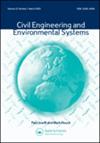Bias and decision making – an overview systems explanation
IF 1.1
3区 工程技术
Q3 ENGINEERING, CIVIL
引用次数: 7
Abstract
ABSTRACT People are continuously making decisions, most of a minor nature, but also some of significance. Few people seem to enquire as to the basis of their decisions or as to why one decision is chosen over another, while in some cases people may not be fully cognisant of how decision making is happening. For any given situation, provided it is not over-constrained, everyone reaches a different decision. That is, any decision can be perceived to involve bias, simply because it is different to someone else's decision, with this difference being attributed to a range of bias sources. It is generally not possible to establish the actual bias sources in any given situation. Accordingly, this paper adopts an overview systems approach to explaining bias in contrast to conventional social science treatments of bias. Bias sources and decisions are linked through looking at the essential underlying components involved in decision making. Some elementary experiments demonstrate that, for a given situation, all people will arrive at different underlying components and hence different decisions, implying the presence of bias. The paper is original in offering a different perspective of bias and linking systems thinking with the literature on bias.偏见和决策-概览系统解释
人们不断地做出决定,大多数是微不足道的,但也有一些是意义重大的。似乎很少有人询问他们的决定的基础,或者为什么选择一个决定而不是另一个决定,而在某些情况下,人们可能并不完全认识到决策是如何发生的。对于任何给定的情况,只要没有过度约束,每个人都会做出不同的决定。也就是说,任何决定都可能被认为涉及偏见,仅仅因为它与他人的决定不同,这种差异归因于一系列偏见来源。在任何给定的情况下,通常都不可能确定实际的偏差来源。因此,本文采用概述系统的方法来解释偏见,而不是传统的社会科学对偏见的处理。偏见来源和决策是通过观察决策过程中涉及的基本基本组成部分联系起来的。一些基本的实验表明,在给定的情况下,所有人都会得出不同的潜在成分,从而做出不同的决定,这意味着存在偏见。这篇论文的独创之处在于提供了一种不同的偏见视角,并将系统思维与偏见文献联系起来。
本文章由计算机程序翻译,如有差异,请以英文原文为准。
求助全文
约1分钟内获得全文
求助全文
来源期刊

Civil Engineering and Environmental Systems
工程技术-工程:土木
CiteScore
3.30
自引率
16.70%
发文量
10
审稿时长
>12 weeks
期刊介绍:
Civil Engineering and Environmental Systems is devoted to the advancement of systems thinking and systems techniques throughout systems engineering, environmental engineering decision-making, and engineering management. We do this by publishing the practical applications and developments of "hard" and "soft" systems techniques and thinking.
Submissions that allow for better analysis of civil engineering and environmental systems might look at:
-Civil Engineering optimization
-Risk assessment in engineering
-Civil engineering decision analysis
-System identification in engineering
-Civil engineering numerical simulation
-Uncertainty modelling in engineering
-Qualitative modelling of complex engineering systems
 求助内容:
求助内容: 应助结果提醒方式:
应助结果提醒方式:


